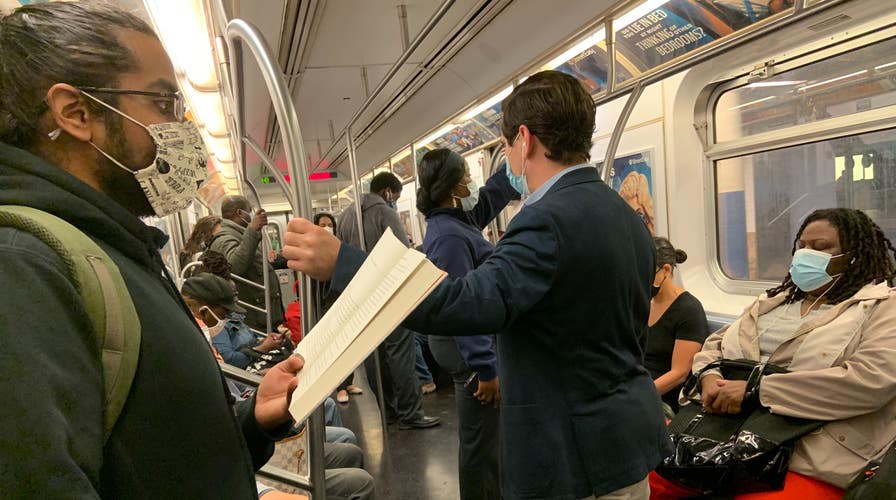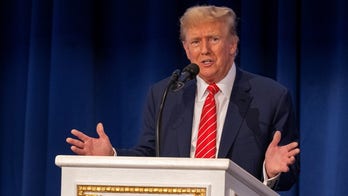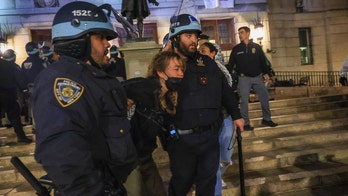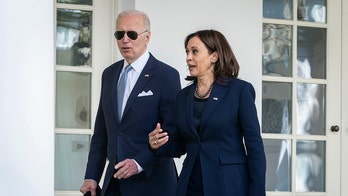NYC resumes indoor dining with restaurants limited to 25% capacity
'Bar Rescue' host Jon Taffer joins Neil Cavuto on 'Your World' to discuss the impact on the restaurant industry.
NEW YORK CITY – While New York, once the epicenter of the coronavirus pandemic, has imposed strict social-distancing rules on businesses, out-of-state travelers and other groups to curb the spread of COVID-19, the cramped subway cars of New York City tell a very different -- and concerning -- story.
Photos from inside some rush-hour subway trains last week showed commuters filling the seats, with others forced to stand uncomfortably close. A vast majority wore masks, but little to no social distancing could be found in those cars.
Fox News witnessed express trains headed from both the Bronx and Brooklyn to Manhattan’s Grand Central Terminal during the morning. While not completely packed with people, passengers still stood shoulder-to-shoulder in some cases.
“The crowded conditions of New York's public transit system was one of the major drivers of their epidemic,” Dr. Marty Makary, a professor of health policy & management at the Johns Hopkins School of Public Health, told Fox News.

Some rush-hour subway cars saw passengers standing shoulder-to-shoulder. (Fox News)
Gov. Andrew Cuomo, a Democrat, frequently has hit the airwaves urging people to wear a mask and social distance. On Monday, he called on the New York Police Department to enforce the rules mandating masks in public. “It is now the law -- you walk down the street without a mask, and you're within six feet, you're in violation.”
Back in March, the governor ordered the closure of non-essential businesses. The state, and especially, New York City, have been slow to reopen compared to other areas; city restaurants were allowed to open for indoor dining just last week, with restrictions still in place.
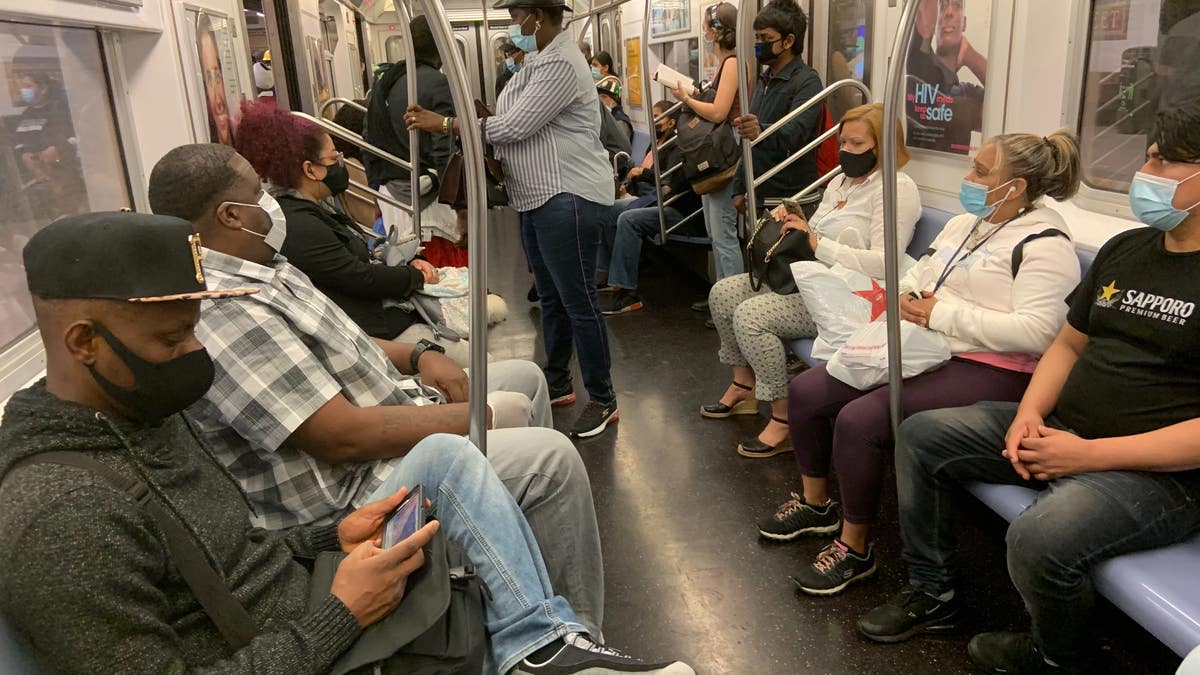
The MTA has ordered passengers to wear masks while riding. (Fox News)
Still, amid the lack of social distancing in some subway cars, Cuomo’s office denied looking the other way; the Metropolitan Transportation Authority [MTA], which runs the subways and commuter trains, is a state agency. Rich Azzopardi, a senior adviser to Cuomo, said comparing subways with restaurants “is foolish and disregards both science and recent history.”
CHEAP DOLLAR WON’T REVIVE NYC REAL ESTATE MARKET ANYTIME SOON
The governor’s office also noted that subways have been vital for many essential workers, and riders and employees are required to wear masks at all times. “As we’ve seen all across the country, it’s cramped, maskless indoor gatherings that were driving clusters,” Azzopardi continued.
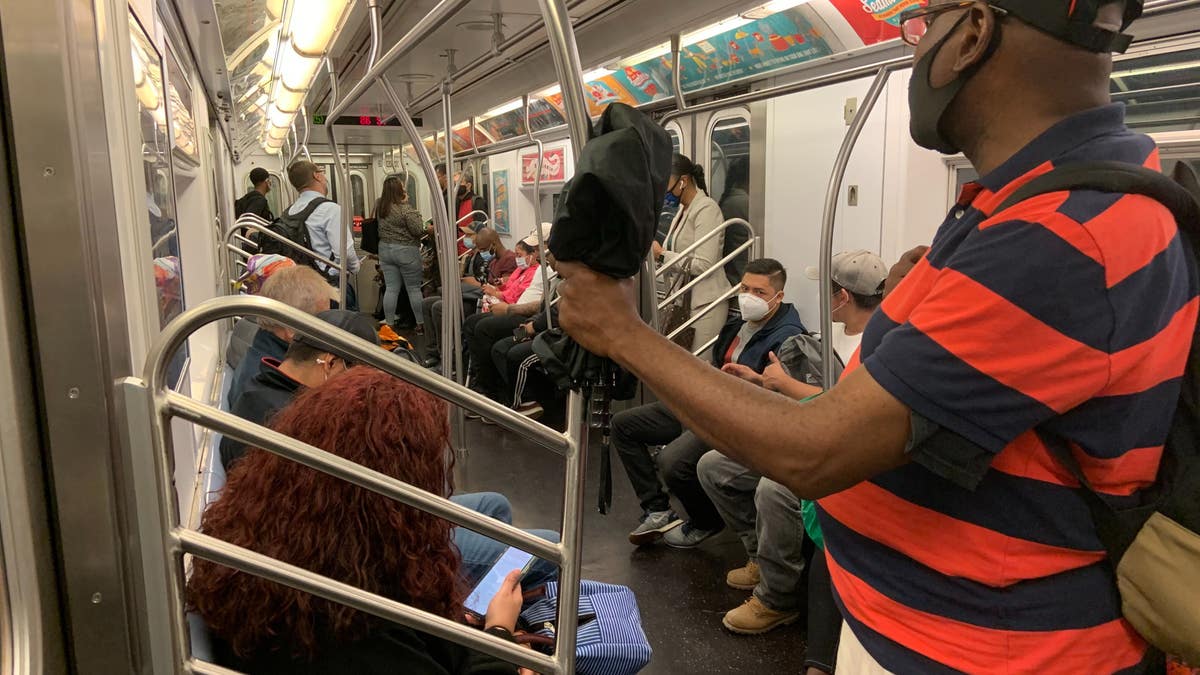
Many of the crowded cars were on trains heading between Manhattan and Brooklyn or the Bronx. (Fox News)
Still, the state’s response did not acknowledge the obvious lack of social distancing. In fact, Mayor Bill de Blasio, also a Democrat, argued for the MTA to limit capacities on subways and buses this past spring but the state rebuffed him, claiming in part that it could cause overcrowding at bus stops and train platforms, The Wall Street Journal reported in June.
New York was bewildered by the first wave of COVID-19 infections that hit the U.S. in March and April this year.
As the virus, which has infected 463,000 New Yorkers and killed more than 32,700, spread throughout the state, Cuomo on March 20 ordered non-essential businesses to close and told people in his state to stay at least six feet away from others.
BILLIONAIRE JEFFREY GUNDLACH SLAMS CALIFORNIA OVER TAXES, MAY LEAVE STATE

"The crowded conditions of New York's public transit system was one of the major drivers of their epidemic," Dr. Marty Makary says. (Fox News)
Those restrictions limited restaurants to take out until early June, at which points only outdoor seating was permitted. On Sept. 30, restaurants were allowed to open their dining rooms to 25% capacity, but many owners say that won’t be enough to keep their businesses going.
“We're facing for the last six months, six months of rent, electricity, insurance and numerous other things that we never been able to get a penny for,” Bobby Vans Steakhouses owner Joseph Smith told FOX Business’ Maria Bartiromo last month.
“The same governor allows upstate New York to have 50%. The same governor allows the Hamptons to have 50%,” he added. “Why is New York City, Manhattan, being victimized and why are we not allowed to have 50%?”
While suffering business owners have been pleading with the governor to ease restrictions, de Blasio moved over the weekend to close schools in nine city ZIP codes, pointing to spikes in cases. Cuomo approved the move Monday; it’s set to take effect Tuesday.
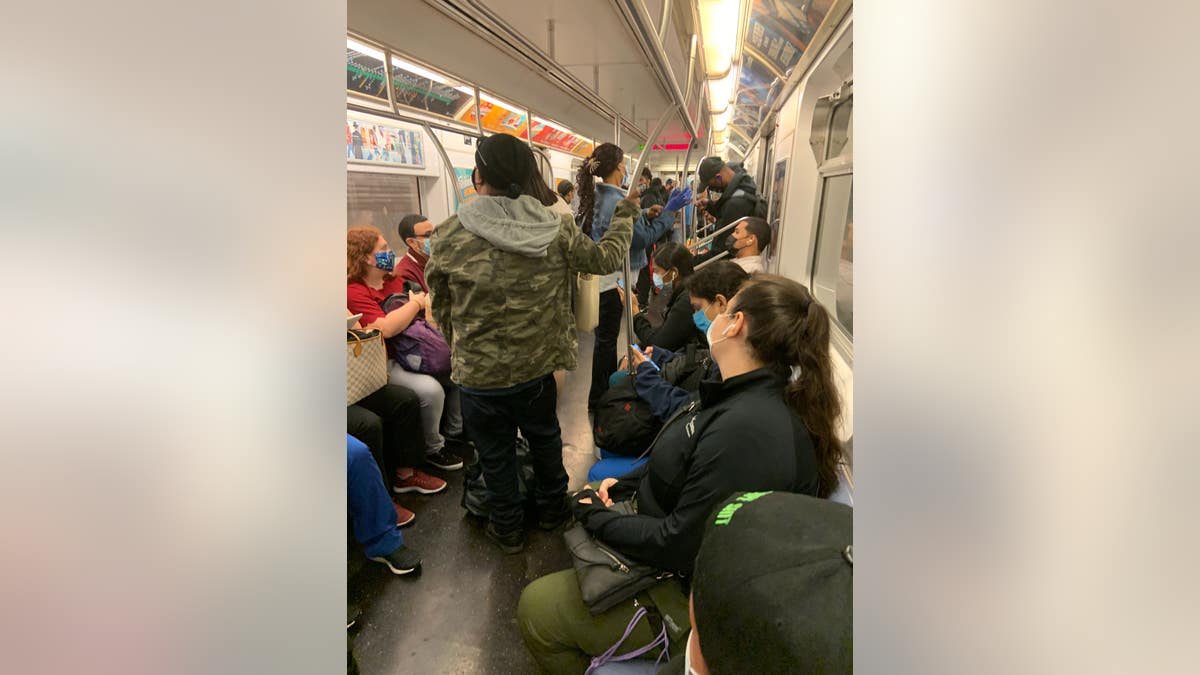
Cuomo's office denied looking the other way on social distancing in the subway. (Fox News)
Non-essential businesses in those areas can stay open -- for now, but further lockdowns would put more pressure on a New York City economy that is already facing the possibility more than one-third of its restaurants disappearing.
The New York State comptroller last week warned up to 50% of bars and restaurants in New York City could permanently close within the next six months due to the restrictions. The closures would mean the loss of up to $23 billion in taxable sales and 150,000 job losses that produce $10.7 billion in wages.
TRUMP’S ‘SECRET VOTERS’ MAY GIVE HIM AN EDGE: ANALYSTS
The loss of revenue could put further financial strain on New York City, and a subway system that was already struggling to pay for maintenance and upgrades.
New York has asked Congress for $12 billion of emergency aid to cover the MTA's projected losses for 2020 and 2021, which are primarily due to lower fare and total revenue and anticipated reductions in the dedicated taxes that fund the department. The MTA is epecting a total shortfall of $16 billion over the next four years.
Ridership is currently at 32% of its pre-pandemic average of more than 4.3 million passengers each day. Riders are mandated to wear a mask, or face a $50 fine, but only encouraged to follow social-distancing measures per guidelines put out by the MTA.
The agency is, however, running its cleaning operation 24 hours a day, 7 days a week, and also providing hand sanitizer and masks for passengers if needed.
The MTA directed Fox News to a study released last week for the American Public Transportation Association which found no direct correlation between the use of public transit and the transmission of COVID-19.
However, that would not mean such a correlation didn't exist. Incomplete data collection, an inadequate sample size or a poor methodological design are all reasons the study may not have shown an association, according to Makary.
He suggested a May study from the American Enterprise Institute noted a strong correlation between public transit and climate and that population density was "clearly" the reason New York City was hit so hard.
CLICK HERE TO GET THE FOX NEWS APP
As for what New York could do better, Makary said the city's poor ventilation in subway cars and on platforms are a "recipe for super spreading."
Having public transportation and an open economy with distancing and universal masking is possible, he said, pointing to Asian countries where "universal masking is not a political argument, it's widely accepted."
